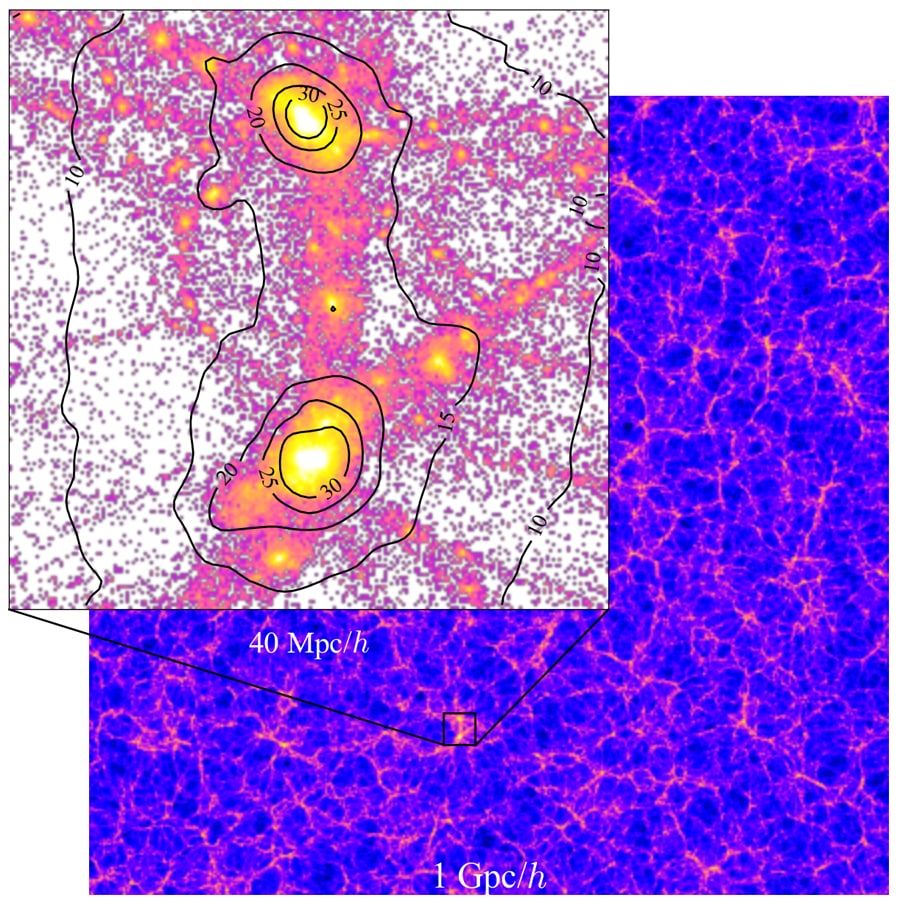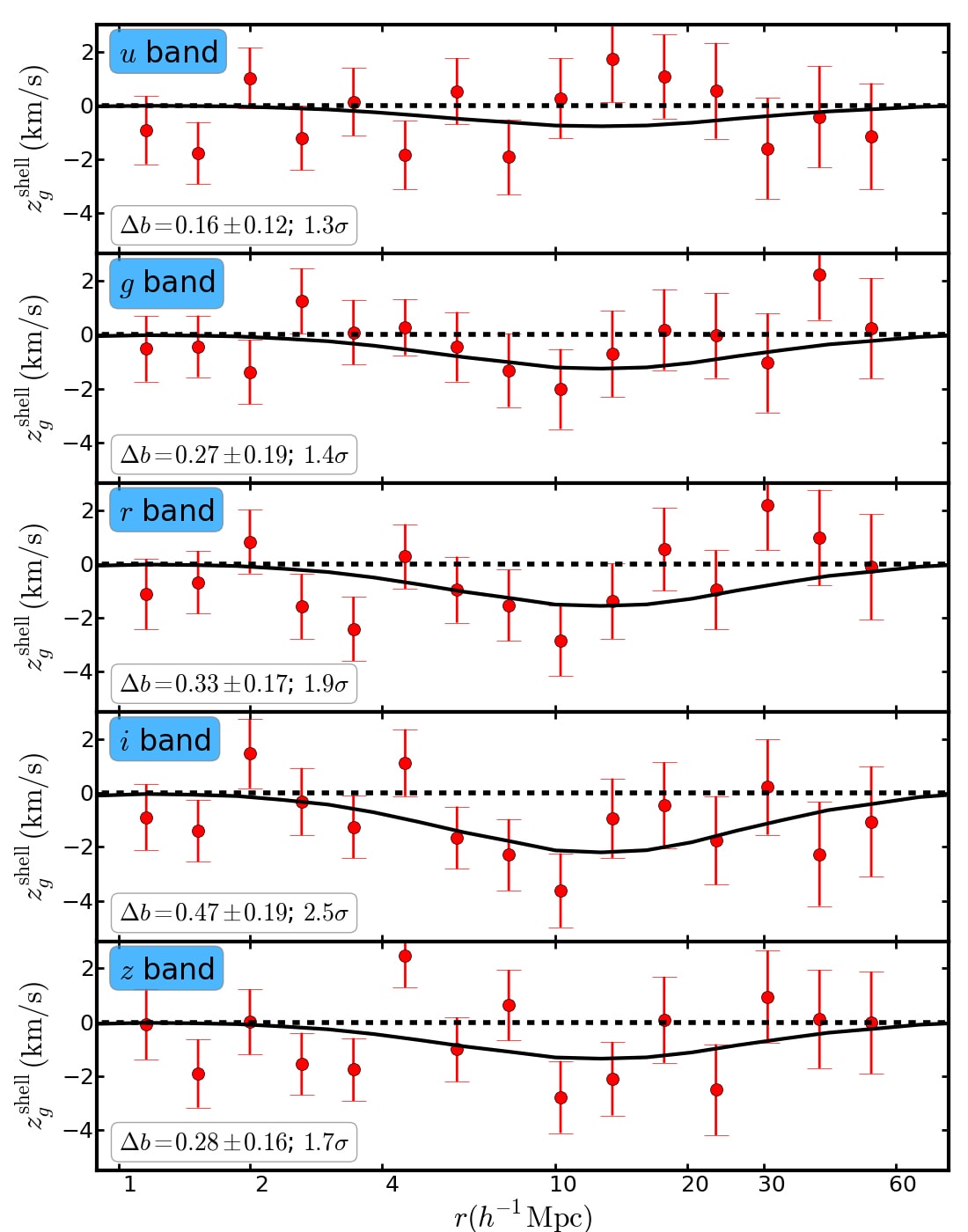A New Test of Einstein's General Theory of Relativity
CMU Physics Team Measures Gravitational Redshift of Galaxies
In 1960, two Physicists, one on the roof of the Harvard Physics Laboratory and one in the basement, carried out a major test of General Relativity (GR), Einstein's theory of gravity. Robert Pound and Glen Rebka were looking for evidence of a gravitational redshift of light. GR predicts that photons climbing up out of the Earth's gravitational field will lose energy and therefore increase in wavelength. The measurement was successful and it became one of the four experimental pillars establishing the validity of GR on Earth and Solar System scales.
Fast-forward to the present day, we once again find ourselves in need of tests of the theories of gravity, but this time on much larger scales. The Universe has been observed to be accelerating in its expansion (in research that was awarded the Nobel Prize in 2011). However, a simple accounting of its contents leads to the expectation that this expansion should be decelerating. There are two leading possibilities to explain this discrepancy with observation. Either a previously unknown substance with negative pressure ("Dark Energy'') dominates the energy balance of the Universe and causes it to accelerate—while at the same time being very smooth and therefore unnoticeable on Solar System scales. The other idea is that GR, while working to high precision on small scales, somehow breaks down when we approach intergalactic and cosmological scales, and so does not cause the attraction which would make the Universe decelerate. In order to tell these possibilities apart we need to extend our tests of gravity to these scales, millions of light years in size. Measuring gravitational redshifts of entire galaxies would thus offer a new way to accomplish this critical test.
A team from the Carnegie Mellon Physics Department working with CMU faculty Rupert Croft and Shirley Ho—Shadab Alam, now at the Royal Observatory in Edinburgh (Scotland), Elena Giusarma, now at Lawrence Berkeley National Laboratory, and graduate student Hongyu Zhu—recently made the first detection of such galaxy gravitational redshifts. In their analysis of half a million galaxies observed in the Sloan Digital Sky Survey, they compared massive galaxies to less massive ones and found that the more massive ones had a greater redshift on average, as expected from Einstein's theory. Quantitative agreement with the theory was demonstrated with the aid of new GR-based computer models developed for the project. This result opens up a new window on GR and alternative hypotheses and appears as a series of four papers in the Monthly Notices of the Royal Astronomical Society. A video summarizing this research for a technical audience appears on Youtube, and an introduction to gravitational redshifts for the interested public can be found here.

